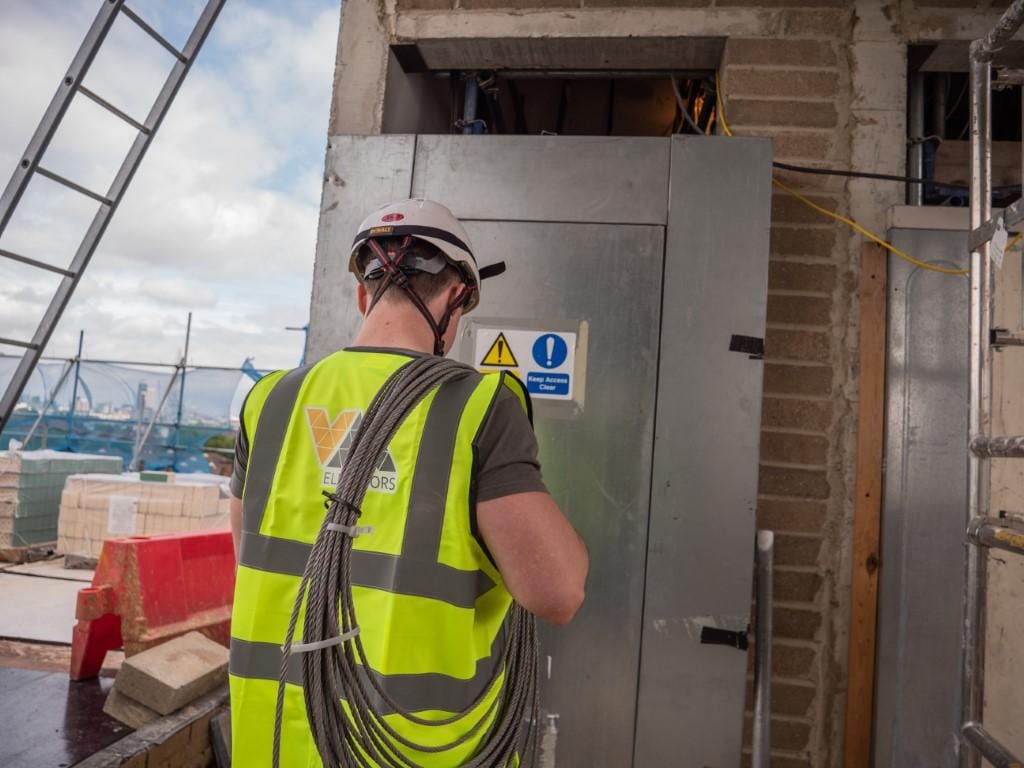Category Archives:
Haunted Lifts from around the world
Happy Halloween 🎃, we’ve pulled together some terror-ific tales of haunted lifts from around the world to elevate your spirits!! 👻
VM ELEVATORS X LEYTON ORIENT COMMUNITY PARTNERSHIP – 22.10.2024
‘O’ what a night!! 🙌🙌
⚽ A huge thank you to Eleven Sports Media and Leyton Orient Community Partnership for an unforgettable evening! 🙏
⚽ We had an absolute blast soaking up the incredible vibes 😎 from the crowd.
⚽ Taking part in the penalty shootout at half-time was a highlight for us, (and what a spectacular goal it was)! 🎉 🏆!
⚽ Fantastic meeting our fellow partners and connecting with everyone. And a phenomenal feeling seeing our branding pitch side. 🤩
⚽ Be sure to head over to our Instagram page to check out our images from the event. https://lnkd.in/gyKEBRV4 😍
More pics dropping soon 📷
wearevmelevators vmelevators leytonorientcommunitypartnership brisbaneroad eastlondon


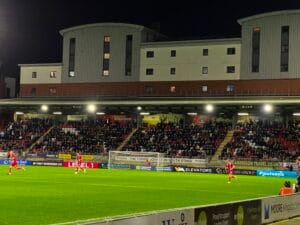 ]
]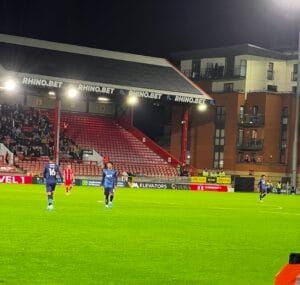
5 Signs Your Lift Needs Refurbishment: Don’t Ignore These Warning Signs
5 Signs That Your Lift Needs an Upgrade
Ensuring that your lift system is up to date is crucial for maintaining safety, efficiency, and user satisfaction. Lifts are integral components in both commercial and residential buildings, facilitating movement and accessibility. However, as lifts age, they may exhibit signs that indicate the need for an upgrade or refurbishment or the technical term we use in the industry, lift modernisation. In this article, we will explore five key signs that your lift may be ready for an upgrade, along with insights into the benefits of modernising your lift and the importance of regular lift maintenance.
 What are the signs that your lift is ready for an upgrade?
What are the signs that your lift is ready for an upgrade?
Identifying increased lift breakdown frequency
Another tell tale sign that your lift may need an upgrade is an increase in lift breakdown incidents. Older lifts often suffer from mechanical failures and electrical issues that can lead to inconvenient breakdowns. If you are experiencing recurring lift breakdowns, it is vital to assess the reliability of your lift system. Frequent outages not only disrupt daily operations but can also lead to safety hazards, especially in busy commercial environments. If your lift has become unreliable, it may be time to consider installing a new lift or upgrading your existing lift components.
Recognising outdated lift systems
As technology advances, so do the standards and features of lift systems. If your lift is an older model, it may lack modern safety features and efficiency standards that current lifts are designed to meet. Recognising outdated lift systems is crucial for ensuring that your building complies with current safety regulations. An upgrade may involve replacing older lifts with modern solutions that offer improved safety features, enhanced user experiences, and greater energy efficiency. If your lift system hesitates to keep pace with these advancements, it is likely time to consider a refurbishment.
How can you tell if your lift needs refurbishment?
Evaluating the performance of your lift
Evaluating the maintenance reports issued by your chosen lift contractor will indicate the performance of your lift and is a critical step in determining whether lift refurbishment is necessary. It is critical you keep hold of all documents obtaining to each lift maintenance sent to you by your chosen provider.
Any significant degradation in performance can indicate that the lift is not meeting operational expectations and may require immediate attention. Regular performance evaluations can help identify these issues early on, ensuring that your lift continues to operate safely and effectively.
Assessing safety regulations compliance
Compliance with UK lift safety regulations is a non-negotiable aspect of lift operation. As regulations evolve, older lifts may not meet the current standards set forth for safety. Your chosen lift contractor should bring this to your attention.
To assess whether your lift complies, it is essential to have a qualified lift engineer conduct a thorough evaluation of its components and operational features. If your lift lacks essential safety features or fails to meet current safety regulations, it is crucial to consider an upgrade. Not only can non-compliance lead to potential legal issues, but it can also jeopardise the safety of users. Regularly reviewing safety compliance is extremely important to ensure you lift meets all safety requires which will help you keep your lift passengers safe. At VM Elevators this would be carried out as part of our lift maintenance contract packages.
Signs of wear and tear in lift components
All mechanical systems, including lifts, are subject to wear and tear over time. Signs of deterioration may arise from regular use, misuse, overloading, or damage to control panels and buttons. Regular lift maintenance allows these issues to be identified and resolved promptly. Depending on the lift’s make, model, age, and type, your maintenance provider can implement refurbishment or upgrades to prevent more significant problems in the future. This highlights the critical importance of routine inspections and maintenance to ensure your lift remains operational.”
What are the common benefits of lift modernisation?
Improved energy efficiency and reduced operational costs
One of the most significant benefits of lift modernisation is the improvement in energy efficiency. Published in March 2015, ISO 25745 is the global standard for energy calculation and classification of lifts and escalators.
Newer lift systems are designed to consume less energy, which can lead to substantial savings on operational costs over time.
At VM Elevators energy efficiency one of our core values. All new installations are installed to the highest energy efficiency rating possible, which is A Class for lifts and A+++ for escalators, so by upgrading your lift, you can take advantage of advanced technologies that optimise energy consumption, such as regenerative drives and LED lighting and regenerative drives that capture the heat generated when the lift is in use and converts this into reusable energy. These upgrades not only reduce energy usage but also contribute to a greener building, aligning with sustainability goals. In turn, this can enhance your property’s marketability and appeal to environmentally conscious tenants.
Enhanced safety features and compliance
Another key advantage of modernising your lift is the enhancement of safety features. New lifts come equipped with advanced safety technologies that ensure compliance with the latest safety regulations. Features such as automatic emergency braking, better control systems, and advanced monitoring can significantly reduce the risk of accidents. Upgrading your lift can provide peace of mind for both operators and users, knowing that the system meets the highest safety standards. This also reduces liability risks for building owners and managers.
Modern aesthetics and user experience
In addition to functional improvements, modern lift solutions offer enhanced aesthetics that can significantly improve user experience. Installing a new lift or refurbishing an old lift can transform its appearance, making it more inviting and visually appealing. Modern lifts often feature sleek designs, improved lighting, and user-friendly interfaces. These enhancements can create a positive impression on visitors and tenants alike, increasing overall satisfaction with the building’s amenities. A well-designed lift environment contributes to the overall experience of the occupants, making it an essential consideration for property owners.
How often should lift maintenance be conducted?
Recommended maintenance schedules for lifts
To ensure optimal performance and safety, regular lift maintenance is paramount. It is generally recommended that lifts undergo maintenance at least once every six months. However, the frequency can vary based on the type of lift—passenger lifts, goods lifts, and platform lifts may have different requirements. Establishing a reliable maintenance schedule with a trusted lift service provider will help keep your lift functioning smoothly and prolong its lifespan. Regular checks can identify potential issues before they escalate into costly repairs or dangerous breakdowns.
We have a full article on lift maintenance frequency.
Understanding the importance of regular lift service
One of the primary signs that your lift needs an upgrade is the frequency of service it requires. Regular lift service is essential for keeping your lift in optimal condition and ensuring safety compliance. If you find yourself scheduling frequent lift maintenance or repairs, it may indicate that your lift system is aging or that components are wearing out. Ensuring that your lift is well-maintained can prevent costly emergency lift repairs and extend the lifespan of the system. If your lift service provider frequently points out the need for repairs, this may be a clear sign that it’s time to consider modernising your lift.
Consequences of choosing not to have your lift properly maintained
As the owner or manager of a building with a lift or any vertical transportation system, you have a legal obligation to ensure it is properly maintained. The most effective way to guarantee that your lift is safe, reliable, and compliant with current regulations is to engage a qualified lift service provider. Adhering to a maintenance schedule is essential, as even non-contractual visits, such as one-off services, can lead to extended downtime, disrupting business operations and causing frustration for tenants. Additionally, neglecting maintenance and failing to meet safety regulations can expose building owners to legal liabilities. Therefore, maintaining a regular maintenance schedule is vital for the longevity and safety of your lift system.
Choosing the right lift modernisation company
Selecting the right lift modernisation company is a critical factor in maintaining your lift system. It is essential to choose a reputable company with a proven track record in lift upgrade services.
At VM Elevators, we specialise in modernising lift and escalator systems to meet today’s safety, performance, and aesthetic standards. Our expert Operations team evaluates your current vertical transportation setup and implements tailored, innovative solutions to boost efficiency and reliability. From upgrading control systems to fitting energy-efficient components, we ensure the smooth integration of modern technologies with minimal disruption to your operations. With a strong focus on sustainability and customer satisfaction, our modernisation services revitalise aging systems, optimising performance and enhancing the user experience
A Comprehensive Guide to Lift Requirements and Lift Installation
Comprehensive Guide to Lift Installation in the UK
When it comes to enhancing accessibility in both commercial and residential buildings, lift installation plays a pivotal role. Whether you’re considering a passenger lift for a high rise building or a platform lift for easier access to different floors, understanding the lift installation process is essential.
This comprehensive guide delves into the various facets of lift installation in the UK, including the relevant building regulations, types of lifts available, and how to choose the right lift installers.
Why Choose VM Elevators for Lift & Escalator Installation in the UK
At VM Elevators, we pride ourselves on being a trusted partner in lift and escalator installations across the UK. With a commitment to delivering high-quality, tailored solutions, we have built a reputation for excellence within the industry.
Our approach is rooted in technical expertise and a deep understanding of UK safety standards, ensuring every project meets the highest regulatory requirements. We work closely with architects, builders, and facilities managers to design and install lifts that are not only safe and efficient but also fully accessible for all users.
What sets VM Elevators apart is our meticulous attention to detail at every stage of the process—from initial planning through to installation and ongoing maintenance. Our highly experienced team of lift installers brings extensive industry expertise, ensuring precision and reliability in every project. We maintain an exceptional safety record and consistently deliver on time and within budget. We will never put our name on a product that doesn’t stand the test of time. We are conscious and committed to ensuring the products we fit, are to the highest quality standards – which in turn saves your business or building money over a long protectory, reducing downtime.
When it comes to lift installation, no two projects are the same. That’s why we tailor our services to meet the specific needs of each building and client, offering solutions that enhance both the functionality and value of the property.
With a growing lift installation portfolio of successful installations, VM Elevators is proud to be recognised as a leader in the UK’s lift and escalator industry. We combine cutting-edge technology, uncompromising safety standards, and exceptional customer service to deliver installations that are made to last.
What is the Lift Installation Process in the UK?
Understanding the Steps Involved in Lift Installation
The lift installation process comprises several critical steps to ensure a smooth installation process.
These steps are very important as they ensure a successful and compliant installation that meets regulations, which means your lift not only works well but most importantly is safe.
Many management companies might already have a lift in their property which they need taken out of service and replaced with an upgraded system.
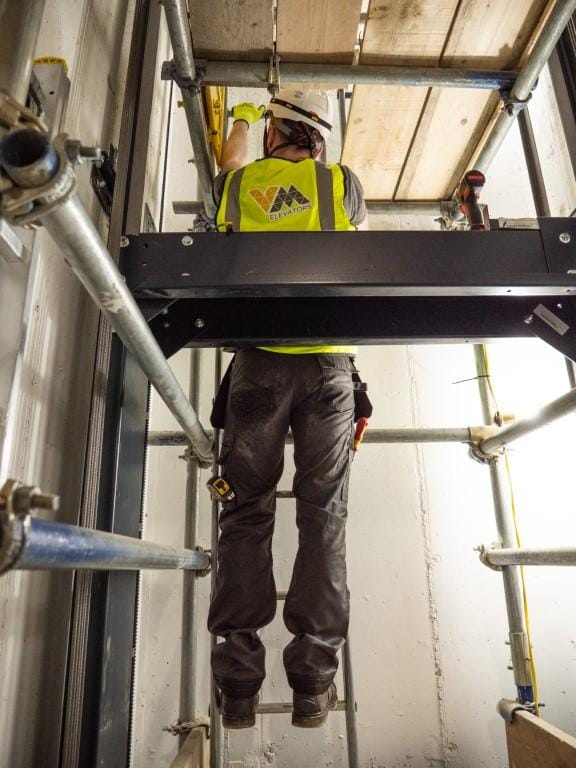
For some, starting from scratch involves bringing in an architect to collaborate closely with builders and lift installers. Typically, this type of lift installation process begins with a thorough site assessment to determine the most suitable lift for the building. This evaluation considers factors such as lift shaft dimensions, existing infrastructure, and the specific needs of the passengers and the usage. Once the appropriate lift type—whether a passenger lift, goods lift, platform lift, hydraulic, motor less etc.—is selected, the next step is the design and planning phase. This includes integrating all necessary components, such as the lift car, control systems, and safety mechanisms.
- Sign-off on logistics and plans: The installation process begins once all logistics and plans are reviewed and signed off by the relevant parties.
- Installation phase: The lift is physically installed in the designated lift shaft, requiring careful coordination between mechanical installation teams and electrical engineers.
- Health and safety compliance: Throughout the installation, strict adherence to health and safety requirements, including the UK’s Health and Safety at Work Act 1974 and LOLER 1998, is essential to ensure the safety of workers and the integrity of the installation.
- Mechanical and electrical integration: The lift car, motor, control systems, and electrical components are installed and integrated into the building’s infrastructure.
- Post-installation testing: After installation, rigorous testing is conducted to verify that the lift operates smoothly and safely. This includes compliance with British Standard BS EN 81 safety regulations.
- Final approval and certification: Before the lift is officially put into service, it must pass all required safety inspections and be certified to meet UK building regulations.
Key Considerations for a Successful Installation
Achieving a successful lift installation requires careful planning and attention to several crucial factors. These considerations ensure that the lift meets safety standards, functions effectively, and provides long-term reliability for users.
- Compliance with safety regulations: Safety is paramount, and all lift installations must strictly adhere to UK regulations. Standards like the Health and Safety at Work Act 1974 and LOLER 1998 set out the minimum requirements for safety and performance. Meeting these regulations guarantees that your lift installation is legally compliant and safe for all users.
- Accessibility for all users: Ensuring accessibility is essential, particularly for users with disabilities. Lift installations must comply with the Equality Act 2010 to cater to everyone’s needs. This includes features like wide enough doors for wheelchair users, tactile buttons, and audible signals for visually and hearing-impaired passengers.
- Qualified lift installers: Engaging experienced, qualified professionals is critical for a successful installation. Lift installers should have a thorough understanding of both the technical aspects of lift systems and UK building regulations to ensure the project meets all safety and compliance standards. Choosing the right team can make a significant difference in the overall quality of your lift installation.
- Ongoing lift maintenance: Regular maintenance is essential for the longevity and safety of any new lift installation. By following the requirements set out in LOLER and PUWER, regular inspections and upkeep will ensure your lift remains reliable and safe for users, avoiding costly repairs and downtime in the long run.
Common Challenges in the Installation Process
- Space constraints in older buildings:
Older residential buildings often have limited space for lift shafts, which can complicate the installation of larger passenger lifts. - VM Elevators’ solution: We specialise in designing and installing compact and bespoke lift systems, such as MRLs or platform lifts, to accommodate tight spaces while maintaining functionality and safety. Our team assesses each building carefully to tailor the lift design to its specific constraints.
- Unforeseen structural issues:
Once installation begins, unexpected structural problems can arise, impacting the installation process. - VM Elevators’ solution: Our team conducts thorough site assessments and remains adaptable. With years of industry expertise, we swiftly address and resolve structural challenges, minimising delays and ensuring the lift installation stays on track.
- Coordination with other contractors:
Working alongside multiple contractors, particularly in commercial projects with tight timeframes, can cause delays if schedules aren’t perfectly aligned. - VM Elevators’ solution: VM Elevators excels in project management and collaboration. We maintain clear communication with all contractors involved, ensuring smooth coordination and minimising disruptions to the installation timeline.
- Compliance with building regulations:
Meeting the wide array of building regulations can be complex, especially for intricate installations. - VM Elevators’ solution: VM Elevators has extensive knowledge of UK safety and building regulations. We ensure every installation fully complies with legal standards, providing peace of mind and avoiding costly compliance issues down the line.
With the right expertise and attention to detail, VM Elevators are effectively able to manage any challenges that arise, delivering reliable, safe, and efficient lift installations.
What are the Building Regulations & Legal Requirements for Lifts in the UK?
Overview of Lift Regulations 2016
The UK lift regulations 2016 were established to enhance safety standards and operational efficiency across the UK.
These regulations encompass various aspects of lift installation, including design, construction, and maintenance requirements. For instance, every lift installed must comply with the British Standard for lifts, which outlines the necessary safety components and performance criteria that must be met. These regulations are critical as they ensure essential safety requirements are met so that your lifts are safe for passenger use and function as intended.
It is the lift owners duty to ensure that they are compliant and meet all Lifting Operations and Lifting Equipment Regulations 1998 (LOLER)
Lifts also fall under the regulations of Provision and Use of Work Equipment Regulations 1998 (PUWER)
Compliance with regulations is a legal requirement so it is imperative that you follow these regulations and part of that is ensuring you choose a reputable and experienced lift installation company.
How Building Regulations Affect Lift Installation
Building regulations in the UK have a profound impact on the lift installation process. Compliance with these regulations ensures that lifts are not only safe but also accessible to all users. For example, lift installations in residential buildings must accommodate individuals with mobility impairments, which often requires specific design features. Furthermore, the regulations dictate the minimum dimensions of the lift shaft and the lift car, as well as the required load capacities for different types of lifts.
Failure to comply with these building regulations can lead to significant repercussions, including fines, forced modifications, or even legal action. Therefore, understanding and adhering to the relevant regulations is paramount for anyone involved in the lift installation process.
Compliance Requirements for Residential Buildings
For residential buildings, the compliance requirements for lift installation are particularly stringent. These requirements focus on ensuring that lifts are accessible to all residents, including those with disabilities. This often includes specific design mandates, such as the installation of tactile buttons, auditory signals, and adequate space within the lift car for wheelchair users.
Moreover, residential lifts must meet specific safety standards, which include emergency communication systems and automatic return features in case of power failure. Adhering to these compliance requirements not only enhances safety but also ensures that the lift installed meets the needs of the diverse population in residential buildings across the UK.
What Types of Lifts are Available for Installation?
Differences Between Passenger Lifts and Platform Lifts
When considering lift installation, it’s crucial to understand the various types of lifts available. Passenger lifts are designed primarily for transporting people between floors in commercial and residential buildings. These lifts typically feature larger dimensions and higher load capacities, making them suitable for buildings with significant foot traffic.
In contrast, platform lifts are generally smaller and ideal for environments where space is limited. They provide a practical solution for enhancing accessibility in public spaces and residential buildings. Platform lifts can be installed both indoors and outdoors, making them a versatile choice for various applications.
For a complete list of the different types of lifts available and their specifications, please visit our lift installation page.
Choosing the Right Type of Lift for Your Needs
Selecting the right type of lift involves considering several factors, including the building’s layout, expected passenger volume, and available budget. If the primary goal is to enhance accessibility, a platform lift or home lift may be the best option. Conversely, for buildings anticipating high foot traffic, a larger passenger lift is essential.
Future lift services and maintenance considerations are also vital in your decision-making process. Choosing a lift that is easy to service and maintain like an MRL will ensure its longevity and optimal performance over time.
What are the Lift Requirements for Installation?
Essential Specifications for Lift Installation
Lift installation requirements encompass various essential specifications to ensure safety and functionality. Key specifications include:
- Lift shaft dimensions: Must accommodate the selected lift type.
- Electrical and mechanical requirements: Necessary for the lift’s operation.
- Safety components: Must include emergency brakes and communication systems to ensure passenger safety during operation.
Understanding Load Capacity and Dimensions
Understanding load capacity and dimensions is critical when selecting a lift for installation. Each lift type has specific load capacity specifications that dictate how much weight it can safely carry. For example, passenger lifts are designed to handle higher load capacities compared to platform lifts, making them suitable for environments with significant foot traffic.
Additionally, the lift car dimensions must meet the needs of its intended users. For instance, a lift in a residential building should provide ample space for accessibility, while a lift in a commercial setting may need to accommodate larger groups of passengers. Ensuring these specifications align with the building’s requirements is essential for a successful lift installation.
Accessibility Considerations for Passengers
Accessibility is a fundamental aspect of lift installation, particularly in public and residential spaces. The lift design must cater to all users, featuring elements such as tactile buttons, audible signals, and sufficient space within the lift car for mobility aids. Additionally, the lift should be positioned at an easily reachable height and provide a smooth, comfortable ride to enhance the overall passenger experience.
How to Choose the a reputable lift installation company
Qualities to Look for in Lift Installation Professionals
Choosing the right lift installers is crucial for a successful installation. Look for experienced professionals with relevant qualifications and expertise in lift installation. They should be familiar with the latest lift regulations and building codes and have a proven track record of successful installations. Request references and check online feedback to assess their reliability. Additionally, effective communication skills are essential for keeping you informed throughout the installation process.
Questions to Ask Potential Lift Installers
When interviewing potential lift installers, it’s important to ask pertinent questions to evaluate their expertise and reliability. Enquire about their experience with similar projects, familiarity with the specific type of lift you wish to install, and their approach to compliance with building regulations. Furthermore, ask about their lift maintenance services and how they manage inspections to ensure ongoing adherence to health and safety requirements.
Time To Install: Lift Installation Steps
Drop Off: The various lift components, such as the cabin, counterweights, and guide rails, are transported to the installation site. In building sites where multiple lifts are being installed, heavy machinery, like a crane or forklift, may be necessary to securely unload these components.
- Lift Assembly: The lift components are assembled according to the manufacturer’s guidelines. This includes installing the guide rails, car, counterweights, and drive mechanism.
- Lift Shaft Installation: If there isn’t an existing lift shaft, one will be constructed to precise specifications, ensuring structural stability and adherence to safety standards.
- Electrical Wiring and Connections: The lift’s electrical system and control circuits are installed, linking the lift to the building’s power source. Safety features like emergency stop buttons, interlocks, and lighting are incorporated during this stage.
- Testing and Commissioning: After installation, the lift undergoes thorough testing to ensure proper and safe operation. This step includes inspecting mechanical and electrical systems and verifying that safety features function correctly.
- Final Inspection and Certification: Following successful testing, a final inspection is carried out by the appropriate authorities to confirm compliance with safety regulations. Once approved, a compliance certificate is issued, completing the process.
Lift Maintenance
Although the installation process may seem complete, ongoing maintenance is vital to ensure the smooth operation of your lift, meet legal obligations, ensure passenger safety, and minimise future repair costs.
At VM Elevators, we specialise in comprehensive maintenance services for lifts and escalators, focusing on the continuous operation and safety of all vertical transport systems. Our skilled technicians conduct regular inspections, lubrication, and adjustments to prevent potential issues and enhance the equipment’s longevity. With our proactive approach, we swiftly address any arising problems, prioritising user safety, client satisfaction, and smooth vertical mobility.
All our maintenance agreements are approved by the Lift & Escalator Industry Association (LEIA), of which we are proud members. We also provide 24/7 emergency breakdown support for all holders of our maintenance contracts.
REQUIRE A NEW LIFT OR ESCALATOR INSTALLATION?
If you’re looking for a lift installation company that meets and exceeds all the necessary requirements mentioned above, you’ve come to the right place. At VM Elevators, we offer premium lift design and installation services, setting the benchmark in safety, energy efficiency, and reliability. Our operations team meticulously assesses every project, ensuring seamless integration of state-of-the-art vertical transportation tailored to each client’s needs. From residential buildings to commercial and public complexes, our installations guarantee smooth vertical mobility while adhering to the highest industry standards.
With a commitment to excellence and customer satisfaction, we deliver unparalleled lift installation solutions, enhancing accessibility for all.
for a no-obligation consultation about our new lift and escalator installation services.
View our prestigious array of work, in London, Essex and the UK Nationwide.
New Lift Consultation for a no-obligation consultation about our new lift and escalator installation services.
View our prestigious array of work, in London, Essex and the UK Nationwide.
What Can Happen If You Neglect Lift Maintenance?
What Can Happen If You fail to service your lift, & Why having a lift contract is so important to negate this
Don’t underestimate the importance of lift maintenance in building management.
An ounce of prevention is worth a pound of cure
In the UK, lift owners are legally responsible for ensuring their lifts are properly maintained through regular inspections, servicing, and necessary repairs by qualified lift engineers or a lift maintenance company..
The individual or organisation in charge of the building or property, whether a landlord, building manager, owner, developer, or council is responsible for overseeing that all repairs are promptly addressed and that lift service is carried out on a regular basis. These responsibilities lie entirely with the lift owner, not with the occupants or tenants.
Lifts should be maintained in accordance with the manufacturer’s recommendations and industry standards. Regular lift service not only ensures the smooth operation of passenger lifts but also plays a crucial role in maintaining safety and compliance with legal regulations so it is crucial regular lift maintenance is conducted to assess the lift’s safety. It will also save you money in the long run as small issues that are inexpensive to fix can turn into large costly issues if not dealt with. This article delves into the potential consequences of neglecting lift maintenance, the importance of regular inspections, and the preventative measures that can be taken to avoid expensive repairs and safety hazards.
What Will Happen If you Neglect Lift Maintenance?
Understanding the importance of regular lift maintenance
Lift maintenance is essential for the longevity and reliability of any lift. Regular maintenance allows qualified engineers to inspect the lift’s systems and address any wear and tear that could impact its functionality. Neglecting maintenance can lead to various issues that may escalate into major breakdowns. A properly maintained lift is especially important for ensuring accessibility, particularly for those who depend on it for mobility, and helps guarantee safe, efficient operation for everyone in the building.
Lift Maintenance is a legal requirement and part of LOLER regulations
Lift maintenance as a lift owner and operator is a legal requirement under Lifting Operations and Lifting Equipment Regulations 1998 or LOLER for short.
These Regulations (often abbreviated to LOLER) place duties on people and companies who own, operate or have control over lifting equipment. This includes all businesses and organisations whose employees use lifting equipment, whether owned by them or not. In most cases, lifting equipment is also work equipment so the Provision and Use of Work Equipment Regulations (PUWER) will also apply (including inspection and maintenance). All lifting operations involving lifting equipment must be properly planned by a competent person, appropriately supervised and carried out in a safe manner.
LOLER also requires that all equipment used for lifting is fit for purpose, appropriate for the task, suitably marked and, in many cases, subject to statutory periodic ‘thorough examination‘. Records must be kept of all thorough examinations and any defects found must be reported to both the person responsible for the equipment and the relevant enforcing authority.
Consequences for lift owners that Ignore Regular Lift Maintenance
If you have a lift in your building there are consequences to not having a Regular Lift Maintenance contractor in place. One of the most immediate risks is the potential for lift failures, which can result in passengers being trapped, injured. Ignoring the necessity of a thorough examination of the lift can lead to major repercussions, including costly repairs and potential legal liabilities. Additionally, lift systems that are not regularly serviced may fail to meet the health and safety regulations outlined in the lifting operations and lifting equipment regulations 1998, putting everyone at risk and as mentioned above this could have legal repercussions.
How Not having a lift contractor can result in costly repairs
When a lift owner neglects to get their have a lift contractor in place minor issues can quickly escalate into major lift repairs. A small problem, such as a malfunctioning sensor or a worn-out cable, can lead to more serious failures if not addressed promptly.
The costs associated with major repairs can be significantly higher than those of regular maintenance. Furthermore, downtime during repairs can disrupt building operations and inconvenience passengers, ultimately affecting the reputation of the building’s management services.
What Happens During a Lift Service?
Key Components Inspected During Lift Service
During a lift service, a comprehensive inspection is conducted by a qualified engineer to ensure the lift operates safely and efficiently. Engineers examine various key components, including the lift’s control systems, braking mechanisms, cables, and pulleys. Regular inspections also involve assessing the alignment of the lift shaft and the condition of the doors. By being proactive in lift service, any potential hazards can be identified and addressed before they lead to serious lift problems.
The Role of a Lift Maintenance Company in Lift Servicing
An experienced lift maintenance company plays a crucial role in the maintenance and repair of lift systems. They possess the expertise necessary to diagnose issues and implement solutions effectively. Responsibilities include conducting regular inspections, performing repairs, and ensuring compliance with equipment regulations. Their knowledge of the specific type of lift in operation allows them to maintain a reliable lift that meets all safety standards, that protects the safety of your passengers and ensures you meet all required legal obligations.
Frequency of Lift Service: How Often Should Your Lift Be Serviced?
Depending on the lifts location, usage, make and model, lift servicing schedules can vary.
To keep your lift in optimal condition, it is recommended that your lift should be serviced at the very least once every six months.
A frequency of maintenance – allows for thorough examinations that can detect wear and tear before it leads to significant issues. Lift owners should adhere to the recommendations laid out by their lift services provider to ensure their lift meets the provisions and use of work equipment regulations.
Regular lift maintenance not only enhances safety but also prolongs the lifespan of the lift, making it a worthwhile investment for building management.
SERIOUS IMPLICATIONS FOR LIFT OWNERS WHO CHOOSE TO NEGLECT LIFT MAINTENANCE?
Legal Requirements for Lift Owners in regards to Lift Maintenance
Building owners are legally obligated to ensure that their lifts are safe for public use, as outlined in the work equipment regulations 1998. Failure to comply with these regulations can result in significant fines and legal action if an accident occurs. Therefore, it is essential for lift owners to prioritise regular maintenance and adhere to all legal requirements concerning lift safety.
Understanding Lift Regulations and Compliance
Understanding lift regulations and compliance is crucial for every lift owner. The equipment regulations and the provision and use of work equipment regulations stipulate that lifts must undergo regular inspections and maintenance by qualified engineers. Familiarity with these regulations helps lift owners stay compliant, thereby reducing the risk of accidents and ensuring the safety of passengers. A reliable lift not only meets these standards but also reinforces the building’s commitment to safety and accessibility.
Act now before it’s too late!
Contact a qualified lift services provider to conduct a thorough inspection and assessment of the lift’s safety. The engineer will identify any critical issues that need immediate attention and recommend necessary repairs or replacements. Once the lift is serviced, implementing a regular maintenance schedule will help keep the lift in reliable condition and prevent future neglect.
What Preventative Measures Can Be Taken for Lift Maintenance?
Setting Up a Regular Lift Maintenance Schedule
Implementing a maintenance schedule is one of the most effective preventative measures that lift owners can adopt. By scheduling routine inspections, lift owners ensure that any potential issues are identified early, drastically reducing the risk of major repairs and enhancing passenger safety. A proactive approach to lift maintenance not only complies with legal requirements but also contributes to the overall reliability of the lift.
Preventative Maintenance vs. Reactive Repairs
Opting for a maintenance contract for your lift is significantly more beneficial than relying on one-off repairs. While reactive repairs can address immediate concerns, they may not prevent future issues from arising. By investing in regular preventative maintenance, lift owners can greatly extend the lifespan of their systems and reduce the likelihood of unexpected breakdowns. This proactive strategy not only safeguards your investment but also ensures the lift remains safe and functional for all users. A maintenance contract provides peace of mind and consistent performance, allowing you to avoid disruptions and ensure reliable operation.
The Benefits of Regular Lift Maintenance Inspections
Scheduling regular lift maintenance inspections provide numerous benefits that extend beyond mere compliance with regulations. These inspections help maintain a reliable lift that operates smoothly, ensuring a positive experience for passengers. Additionally, they can uncover potential hazards that could lead to accidents or injuries if left unaddressed. Ultimately, regular inspections foster a culture of safety and reliability within the building, enhancing the overall quality of the lift service.
Why Choose VM Elevators as your Lift Maintenance Contractor
At VM Elevators, we excel in providing comprehensive lift & escalator maintenance services in and around London, Essex, and the home counties. Our team of highly qualified technicians conduct routine inspections, lubrication and adjustments to mitigate potential issues, extend the lifespan of your equipment and keep your lifts running smoothly. Additionally we offer all our maintenance contract holders, 24-7 emergency breakdown cover. With our proactive approach, we address any emerging concerns promptly, prioritising user safety, customer satisfaction and seamless vertical mobility for all our clients.
All of our maintenance contracts are approved by the Lift & Escalator Industry Association (LEIA) of which we hold full membership.
VM ELEVATORS’ MARKS #WORLDMENTALHEALTHDAY 🧠
🧠 To mark #worldmentalhealthday and in the first of our ‘10 questions with’ series, say 👋 to John, VM Elevators’ Service Manager.
John shares his 10 tips on his he maintains his mental health on a professional and personal level.
Today is also a reminder for us here at VM, that:
🧠 it’s ok to not feel ok
🧠 it’s ok to ask for help
🧠 to check in with people around you
🧠 check in on yourself
❤️ if you or someone you know needs a safe place to talk, charities like Mind UK (0300 123 3393) – who work to remove the stigma around mental health – are always there to listen.
Please don’t struggle on your own, remember you are never alone in this – support is out there! 🙏
We are sending all our ❤️ to anyone affected by mental health and anyone who just needs to hear this today!
#wearevmelevators #mentalhealthawareness #mentalhealthmatters
WOMEN IN CONSTRUCTION: AFFINITY – CONSTRUCTION COLLABORATION EVENT SUCCESS FOR BRAND AMBASSADOR & VM ELEVATORS PROJECT MANAGER CLAIRE
Last Thursday, Claire Dempsey, Project Manager at VM Elevators Ltd, represented the company at the AFFINITY – Construction Collaboration Women in Construction event, hosted at COSENTINO. She had the privilege of connecting with inspiring figures from across the industry, making the most of the opportunity to network in such excellent company.

A special thank you to The Hon Richard Evans and Juna Margariti for organising an unforgettable evening that celebrated the achievements of women in construction.

We are thrilled to announce that VM Elevators secured two exciting new projects from this fantastic event. Championing Claire and celebrating the contributions of women in the industry, we look forward to future collaborations and continued success.

If you are need of a lift installation company contact us at https://vmelevators.com/get-quote/
VM ELEVATORS X LEYTON ORIENT COMMUNITY PARTNERSHIP – HIGHLIGHTS FROM LEYTON ORIENT GAME 24.09.24
Fresh off the press!! 📸📸📸 VM Elevators make its debut at Leyton Orient, Brisbane Road.

VM have been spotted in and around the grounds at the recent Leyton Orient game! 😎

We’re proud to kick off this new era as part of the Leyton Orient Community Partnership with Eleven Sports Media.

Have a Butcher’s 😉 for us next time you’re at Brisbane Road!! ⚽👀 wearevmelevators eastlondon
LeytonOrient CommunityPartner BrisbaneRoad CommunityPartnership
Stay up to date with all our exciting news: https://vmelevators.com/vm-news-initiatives/
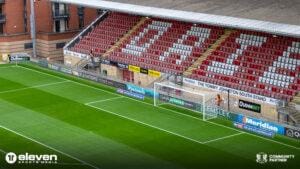















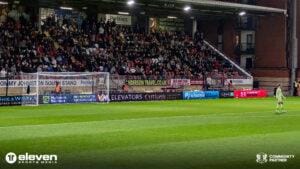

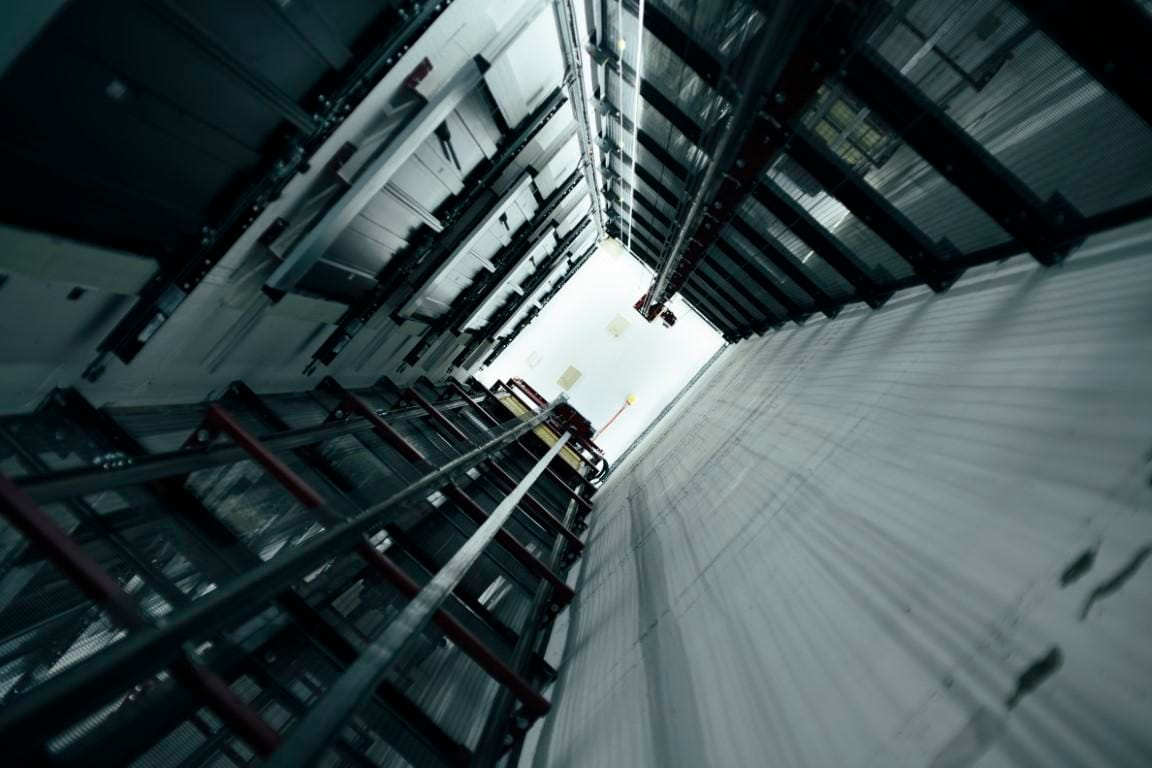 What are the signs that your lift is ready for an upgrade?
What are the signs that your lift is ready for an upgrade?